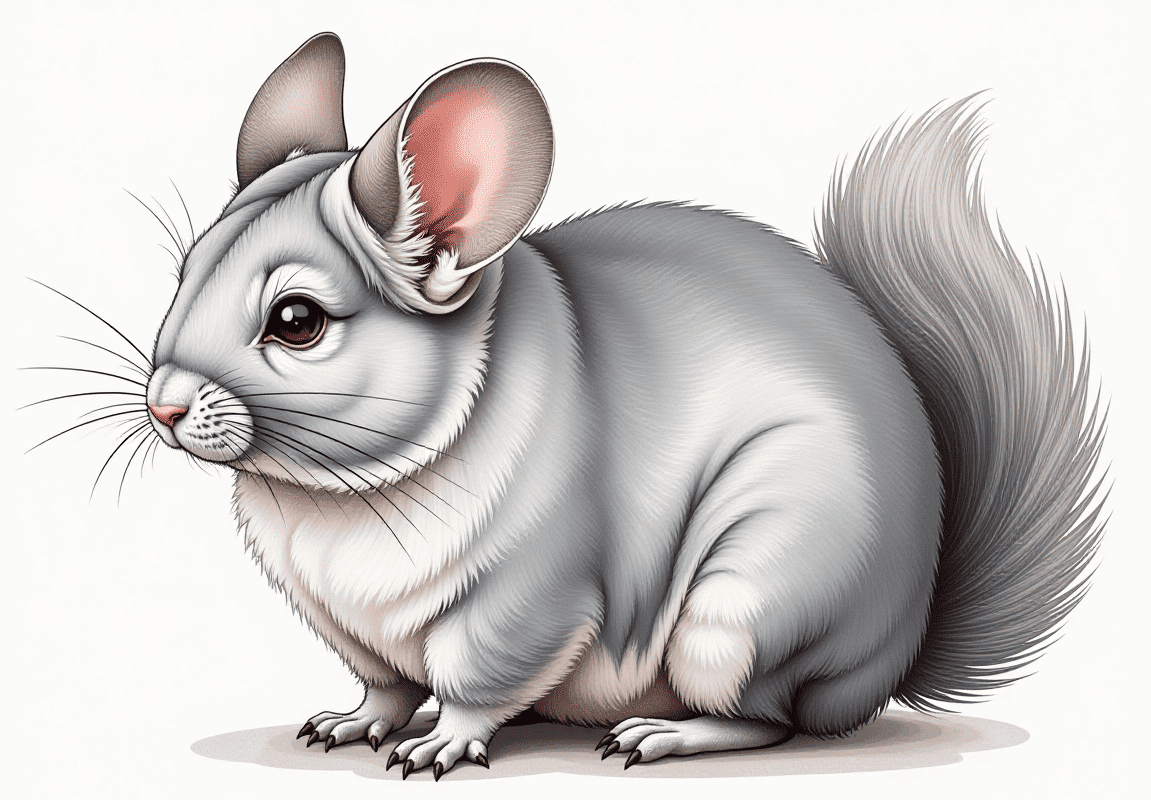The Science Behind Chinchilla Care: Fascinating Facts About Their Unique Biology
Caring for a chinchilla isn’t just about providing food and water; it’s about understanding their unique biology and needs. These fascinating creatures, native to the Andes Mountains, have evolved specific traits that require precise care to ensure their well-being. In this guide, we’ll delve into the science behind chinchilla care and uncover the fascinating facts about their unique biology.
1. Chinchillas and Their Dense Fur: A Marvel of Nature
One of the most remarkable scientific facts about chinchillas is their incredibly dense fur. Unlike other mammals, chinchillas have over 50 hairs per follicle, compared to humans, who typically have just one. This dense fur helps them survive cold, high-altitude environments but also makes them prone to overheating and fungal infections in captivity.
Care Tip: Always maintain a cool environment for your chinchilla, ideally between 60-70°F (15-21°C), and avoid high humidity levels.

2. Specialized Digestive Systems for Herbivores
Chinchillas are herbivores with digestive systems designed to process high-fiber diets. Their long cecum aids in fermenting plant material, which is why hay is a crucial part of their diet. Without sufficient fiber, chinchillas can develop gastrointestinal stasis, a life-threatening condition.
Care Tip: Provide unlimited access to high-quality hay like Timothy or orchard grass, along with a measured amount of chinchilla-specific pellets.

3. Unique Teeth Growth and Maintenance
Chinchilla teeth grow continuously throughout their lives, at a rate of about 2-3 inches annually. If their teeth aren’t properly worn down, it can lead to malocclusion, causing pain and difficulty eating.
Care Tip: Offer safe chewing materials such as untreated wood or pumice stones to keep their teeth healthy and trim.
4. Sensitive Auditory Systems
Chinchillas have highly developed auditory systems, allowing them to detect a wide range of frequencies. This adaptation helps them evade predators in the wild but also makes them sensitive to loud noises in captivity.
Care Tip: Place your chinchilla’s cage in a quiet area away from televisions, speakers, and other loud devices.
5. Efficient Energy Usage and High Activity Levels
In the wild, chinchillas are crepuscular, meaning they’re most active during dawn and dusk. Their compact bodies and efficient muscles allow them to leap up to six feet high, a survival skill for navigating rocky terrain.
Care Tip: Provide a large, multi-level cage with platforms and plenty of room for jumping and climbing. Incorporate safe exercise wheels to mimic their natural activity.

6. Water Avoidance Due to Fur Density
Because of their dense fur, chinchillas cannot tolerate getting wet. Water can get trapped in their fur, leading to skin infections and hypothermia.
Care Tip: Use dust baths made of volcanic ash to help your chinchilla clean itself. Offer a dust bath 2-3 times a week for 10-15 minutes at a time.
7. Lifespan and Reproductive Science
Chinchillas have a longer lifespan than most small pets, averaging 10-15 years in captivity when cared for properly. Scientifically, this longevity is linked to their slow reproductive rate, as females typically birth only 1-2 kits per litter after an 111-day gestation period.
Care Tip: Ensure proper veterinary care and monitor their diet and environment to promote a long, healthy life.
8. Social Structure and Behavioral Science
In the wild, chinchillas are highly social animals, living in colonies of up to 100 individuals. This social behavior is rooted in their survival strategy against predators.
Care Tip: Consider adopting a pair of chinchillas if possible, as they thrive with companionship. However, ensure proper introductions to avoid territorial disputes.
9. Stress and Cortisol Levels
Scientific studies show that chinchillas experience elevated cortisol levels when stressed. Prolonged stress can lead to health issues like fur chewing or digestive problems.
Care Tip: Minimize stress by maintaining a consistent routine and handling your chinchilla gently and infrequently.
10. Thermal Regulation and Environmental Needs
Chinchillas cannot sweat and rely on their large ears to regulate body temperature. Blood vessels in their ears help release heat, but they are still highly susceptible to heatstroke.
Care Tip: Keep your chinchilla’s habitat well-ventilated and use cooling devices like ceramic tiles or frozen water bottles during warmer months.
Conclusion
Understanding the science behind chinchilla care is essential for keeping these unique pets healthy and happy. From their dense fur and specialized diet to their sensitive auditory systems and social behaviors, every aspect of their biology plays a role in their care. By applying this knowledge, you can ensure your chinchilla thrives in a safe and nurturing environment.
For a deeper dive into their biology and care, revisit The Science Behind Chinchilla Care: Fascinating Facts About Their Unique Biology. Let’s make science the foundation of better pet care!
